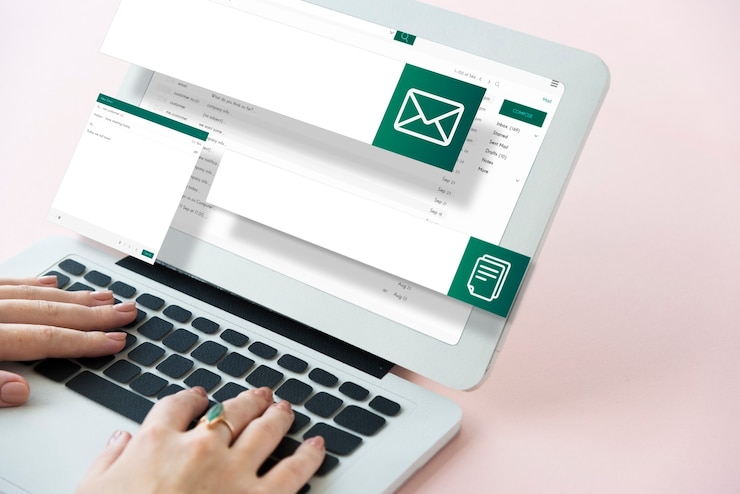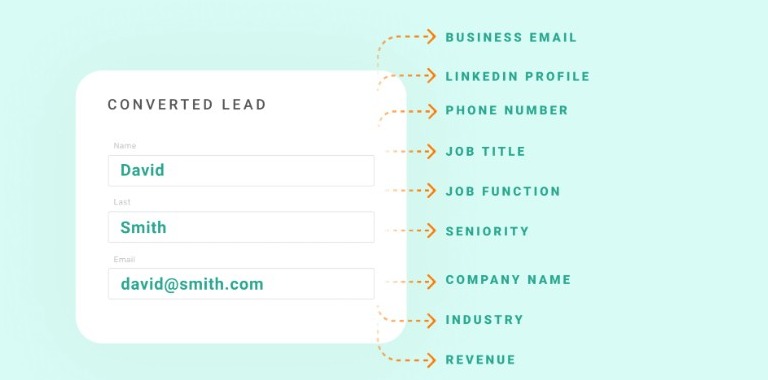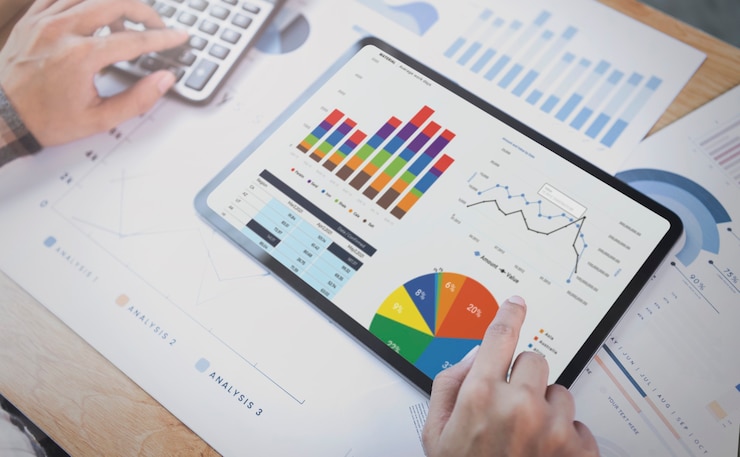Think of it as a strategy that answers your customer’s questions and attracts them to your products or services. Before we dive into our comprehensive demand generation strategies, let us understand more about demand generation, why we should use it, and how it will get you more leads in the long run. With that said, let’s get started.
What is Demand Generation?
Demand generation is a marketing process focusing on creating awareness and increasing the demand for your products and services. Simply put, the end goal is to develop long-term lead generation pipelines and convert leads into qualified business customers. Lead generation and demand generation can easily be confused, but the two have a thin line of differentiation. So, if you want to understand the difference between demand and lead generation, keep reading this article.
Demand Generation vs. Lead Generation
Although demand generation and lead generation are used interchangeably, both are different marketing strategies. Let’s understand demand generation first. It’s focused more on gaining an audience and increasing the visibility of your business in front of customers. You can use different marketing channels to get the necessary attention and make them aware of your business’s products and services. Whereas lead generation only focuses on converting qualified leads into paying customers. It generally forms the bottom of the marketing funnel. Here, customers are already aware of your offerings and considering the available solutions in the market. It won’t be wrong to say that lead generation is the outcome of your demand generation efforts. Why do we say that? Because now the customers are already convinced and ready to make a purchase. All you need to do is handle these clients to your sales team to convert them into paying customers. Before we jump into our detailed guide, it’s crucial to understand the different stages of demand generation that form the basis of a customer’s journey.
Different Stages in Demand Generation
As a marketing professional, you need to know the different stages of demand generation to understand your customers’ pain points. Before making a purchase, customers spend a reasonable amount of time researching the available solutions and considering what fits their budget. Having a decent knowledge of these different stages that a potential customer goes through, you can craft more engaging and targeted content to guide prospects through the buying process. This approach solves customers’ problems step-by-step and creates a smooth flow through the marketing funnel before you handle the potential leads to your sales team.
Stage 1: Know Your Customer Avatar
Before you even start pitching about your products or services, it’s crucial to understand your customer avatar (buyer persona). If you’re not sure about your potential customer, consider answering questions like:
Who is going to buy your products?What’s their main profession?What industry do they work in?What problems are they facing now?
It’s okay if you don’t have the answers to these questions now, but this will help you find your target market and give you a clear picture of who you are speaking to. Once you know your customer avatar, you can start thinking of bringing them into your top marketing funnel and showcase your services as a solution to their problems.
Stage 2: Create a Marketing Funnel
It’s time to address the importance of mapping your customer’s journey. Consider it as creating a marketing funnel for your customer avatar. And then, what steps would you take to convert them into paying customers? Typically, a marketing funnel consists of three parts:
Awareness stageEvaluation stageConversion
Now, you can draw an idea of how to create a sequence of steps so the customer gets closer to your brand and trust you over your competitors.
Stage 3: Set a Measurable End Goal
Setting measurable end goals is important to track the performance of your marketing campaigns. These goals can be as specific as getting a sale, downloading an ebook, or combining different KPIs. Generally, these goals help you determine the behavior of your target audience and draw a conclusion. To calculate the ROI of your campaigns, you also need to have a strong understanding of analytics and customer insights. Additionally, having the right tools to track KPIs is crucial for success in this process. If you get qualified leads at the end of your marketing campaigns, your sales team can initiate calls and convert the information into paying customers.
Demand Generation: Step By Step Guide
Demand generation is focused on getting customers closer to your products and building a long-lasting connection with your company. You can say it combines B2B attraction marketing and establishing your company as a brand in the industry. With that said, let’s consider the steps you should consider while creating a successful demand generation strategy for your business.
#1. Start Building Brand Awareness
With the growing competition, turning your business into a brand and establishing yourself as an authority is essential. Although this might look simple and less rewarding at the start, it eventually creates a long-lasting image in getting customers’ attention. A simple way is to use content marketing to generate the necessary traction, but it’s a wide topic; therefore, we’ll cover it in our next point. Another authentic way to stand out from the competition is to get genuine ratings and reviews from your existing users. Customers often check the reviews before committing to any product, and positive reviews are a proven catalyst. You can use positive reviews as testimonials to increase customers’ trust in your brand.
#2. Use Content Marketing
Content marketing is the most widely adopted marketing strategy to attract and engage customers. Here the idea is to create content pieces like articles, blog posts, videos, images, audio, etc., and distribute them on customer-engaging channels. Let us explore some popular content marketing practices you can use to create awareness about your business.
Inbound Marketing
Inbound marketing involves writing informative content and publishing it on your website blog to attract organic customers. The process can be divided into three major areas: You need to implement SEO, create backlinks, and distribute the content on social media platforms to get some initial traction. You can also use marketing automation tools for email marketing and CRMs to keep customers engaged and increase interactions.
Social Media
Social media is free, and you can consider these platforms for identifying your customer avatar. These platforms make it easy to run paid social campaigns and build a dedicated community around your products.
Account Based Marketing
Account-based marketing refers to catering to a specific high-value customer group that provides recurring income and demands dedicated support.
Use Lead Magnets
Lead magnets can be anything that can be offered free to your probable customers in exchange for their contact details. For example, you can provide free ebooks, whitepapers, or presentations on your business blog when someone submits their email address.
Video Marketing
Videos dominate the internet and gain the highest engagement rates compared to images, infographics, and text-based content. For example, you must have noticed the growth of your favorite Youtube channels compared to the blog-based publishers.
Affiliate Marketing
Affiliate marketing is rising as more and more people want to use the same products and services that helped them get results. Generally, customers look up to authority influencers in the industry and use their recommended products.
#3. Distributing Channels
Once you start creating content for your blogs, simply publishing it will not bring you the desired results. You need to start distributing your content on different channels to get the necessary traction. One of the best ways is to build an email list and run email marketing drip campaigns. Sending emails to your customers makes them aware of your newly published articles and engages with your brand. Over time, this will create a steady flow of old returning users on your website, and you can get business insights from returning customers. Another way is to repurpose your content for channels like social media, YouTube and Instagram reels, image slides, Twitter spaces, and many more.
#4. Nurture Leads
Once you start publishing and distributing good content which adds value to users, customers start exchanging their email addresses. You can nurture these potential leads by running drip email campaigns and slowly moving them closer to the end goal: making a purchase. You can also retarget these leads using social media campaigns in the long run and keep them interested in how your services can solve their problems.
#5. Optimize Campaigns
To get maximum results out of your marketing campaigns, you need to optimize them constantly. You can track your key indicators and analyze the data to understand your performance. Some of the important KPIs that you should look at are:
Organic TrafficSessionsNew users vs. old usersGoals and conversionsTraffic demographicsLeads generated
Once you get essential insights from the data, you can tweak the settings of your marketing campaigns and optimize them to get more targeted results. With time, these changes will increase the ROI on your marketing spend and help you understand what works for you and what does not.
#6. Streamline Marketing Flow with Demand Generation Tools
As your demand generation process grows, keeping things organized instead of doing important tasks will take up much of your time. However, you can solve the problem with the help of demand generation automation tools. These platforms are designed to automate repetitive tasks, so you can focus on growing your business. For example, Ortto can ease your B2B marketing efforts with its easy-to-use features like mapping customer journeys, integrating with CRMs, sending emails, and SMS, creating lead generation popups, and tracking everything in dashboards. Suppose you’re thinking of running paid ads for demand generation. In that case, you’ll spend a good amount of time tracking your budgets, clicks, and CTRs on social media platforms like Facebook, LinkedIn, and Google. Instead of handling ad campaigns on different platforms, you can check tools like Metadata.io, which automates things for you and bring all the campaigns to a single dashboard.
#7. Generate Performance Reports
We’ve already covered the importance of setting measurable end goals. Now that you know your end goals are generating weekly, bi-weekly, or monthly reports to measure your performance is essential. Generally, marketing teams opt for a monthly reporting system because there might be some incidences of insufficient data. The reasons can be many external factors like holidays or other geopolitical events. These reports help you track your top-performing keywords, new backlinks generated, perform routine SEO checkups, check website speed, click-through rates, and many more. It also enables you to create a line of upcoming tasks that can improve results in the coming months.
Summary
While generating business revenue is the end goal, demand generation is a tried and tested way of marketing success. Whatever your needs are, it is essential to know where and how you can use demand generation strategies to increase your leads and get more sales. The strategies outlined above are proven ways that you can use to smoothly move your customers through your marketing funnel with minimal obstacles. Lastly, before you begin your demand generation strategy, don’t forget to check out our list of best popup builders for generating qualified leads for your business.
















